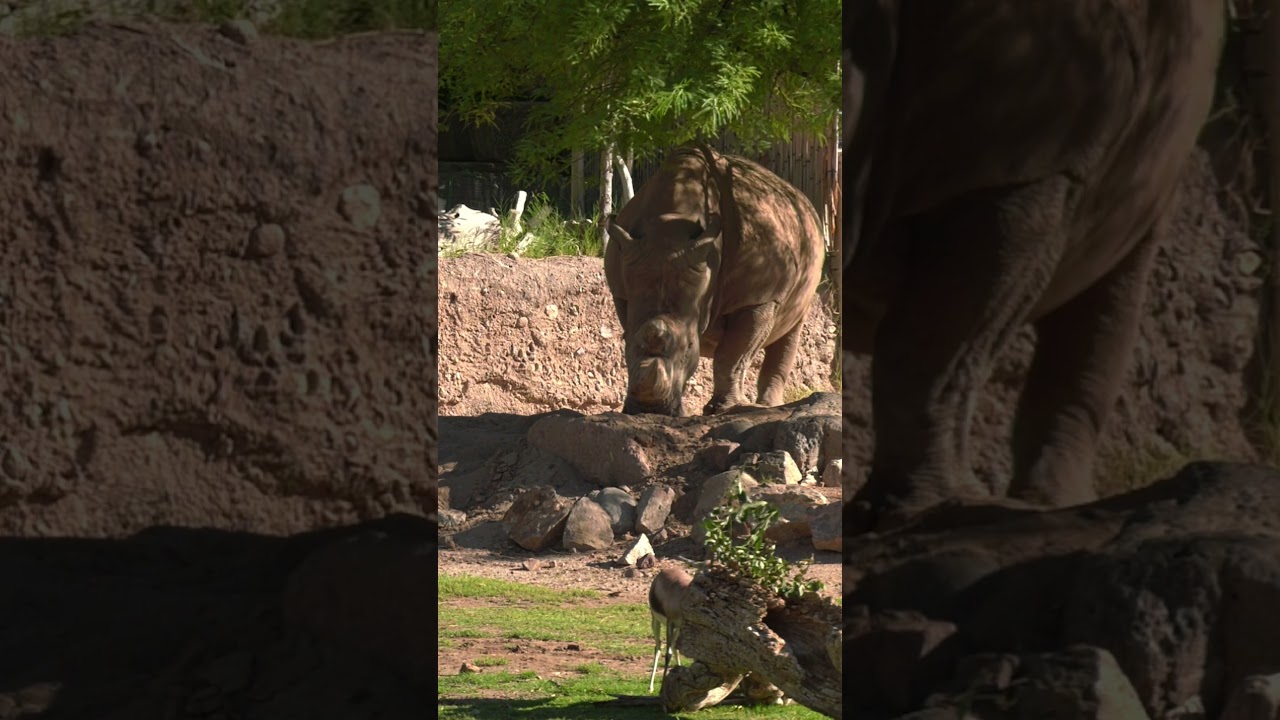Summary:
– Reid Park Zoo is celebrating World Rhino Day with two southern white rhinos, Yebonga and Fireball, as their ambassadors.
– Southern white rhinos are the most populous rhino species but still face threats from poaching, habitat loss, and climate change.
– Taking a stand for strict regulations on wildlife and wildlife artifact trading can help protect wild rhino populations.
Rhinos are magnificent creatures, their prehistoric looks and gentle nature continually captivating our fascination. And today, on #WorldRhinoDay, we have the pleasure of introducing you to two incredible southern white rhinos at Reid Park Zoo – Yebonga and Fireball. These two ambassadors eagerly await your attention, and we are here to shed some light on their unique and fascinating aspects.
As we settle in to learn more about these majestic creatures, we must acknowledge their challenges in the wild. Despite being the most abundant rhino species, Southern white rhinos are not exempt from the perils of poaching, habitat loss, and climate change. Their very existence is at stake. However, by educating ourselves and taking a stand for strict regulations on wildlife and wildlife artifact trading, we can contribute to preserving incredible animals.
Let’s dive into the awe-inspiring world of Yebonga and Fireball. The Rhino Fireball Settles In For A Nice Nap!
Did you know that the southern white rhino is not white? Their name comes from a misinterpretation of the Dutch word “wijde,” which means “wide” in English. The rhinos were referred to as “weed” due to their broad mouths, eventually leading to the English translation of “white” rhinos.
Yebonga and Fireball have quite an impressive pedigree. Both were born in captivity, which means they have enjoyed a safe and protected environment ever since. Their presence at Reid Park Zoo allows visitors to witness their natural behavior while supporting vital conservation efforts.
Yebonga is a true gentle giant, weighing in at a whopping 5,000 pounds! Despite their massive size, they are herbivores, feeding mainly on grasses. Can you imagine the sheer amount of vegetation they must consume to fuel their bodies? It’s quite a feat!
On the other hand, Fireball finds solace under the shade of a tree, as seen in the stunning image accompanying this article. Rhinos have a fantastic sense of smell and hearing, allowing them to detect danger and locate food sources from afar. During their extensive naps, they remain alert to potential threats, ready to act if necessary.
Let’s take a moment to highlight the importance of preserving wild rhino populations. Poaching remains a significant challenge, driven by the illegal trade of rhino horns. Efforts to combat this trade are critical, as rhino horns are mistakenly believed to possess medicinal properties and are highly sought after in certain cultures. We must continue to advocate for strict regulations on wildlife and wildlife artifact trading to protect these magnificent creatures from harm.
Habitat loss is another pressing issue. As human populations expand and industries encroach on natural habitats, rhinos lose their homes. By supporting organizations dedicated to preserving and restoring rhino habitats, we can ensure these incredible creatures have a place to thrive.
Climate change poses yet another threat to rhino populations. Increasing temperatures and shifting weather patterns affect their food availability and overall well-being. By reducing our carbon footprint and actively working towards a more sustainable future, we can mitigate the impact of climate change on these vulnerable species.
In conclusion, Yebonga and Fireball are ambassadors for their species, reminding us of the importance of protecting all rhinos, both in captivity and the wild. On this #WorldRhinoDay, let’s celebrate their presence and reflect on our actions to ensure a brighter future for these magnificent creatures. Join us in supporting strict regulations on wildlife and wildlife artifact trading, advocating for habitat preservation, and fighting climate change. Together, we can make a difference and secure a world where rhinos thrive for generations.
*****
Source Description
It’s #WorldRhinoDay, and here at Reid Park Zoo, two southern white rhinos call the Zoo home, Yebonga and Fireball (he is seen resting under this tree).
In the wild, southern white rhinos are the most populous of the five rhino species but are still troubled by poaching, habitat loss, and climate change. Help wild rhino populations by taking a stand for strict regulations for wildlife and wildlife artifact trading.


